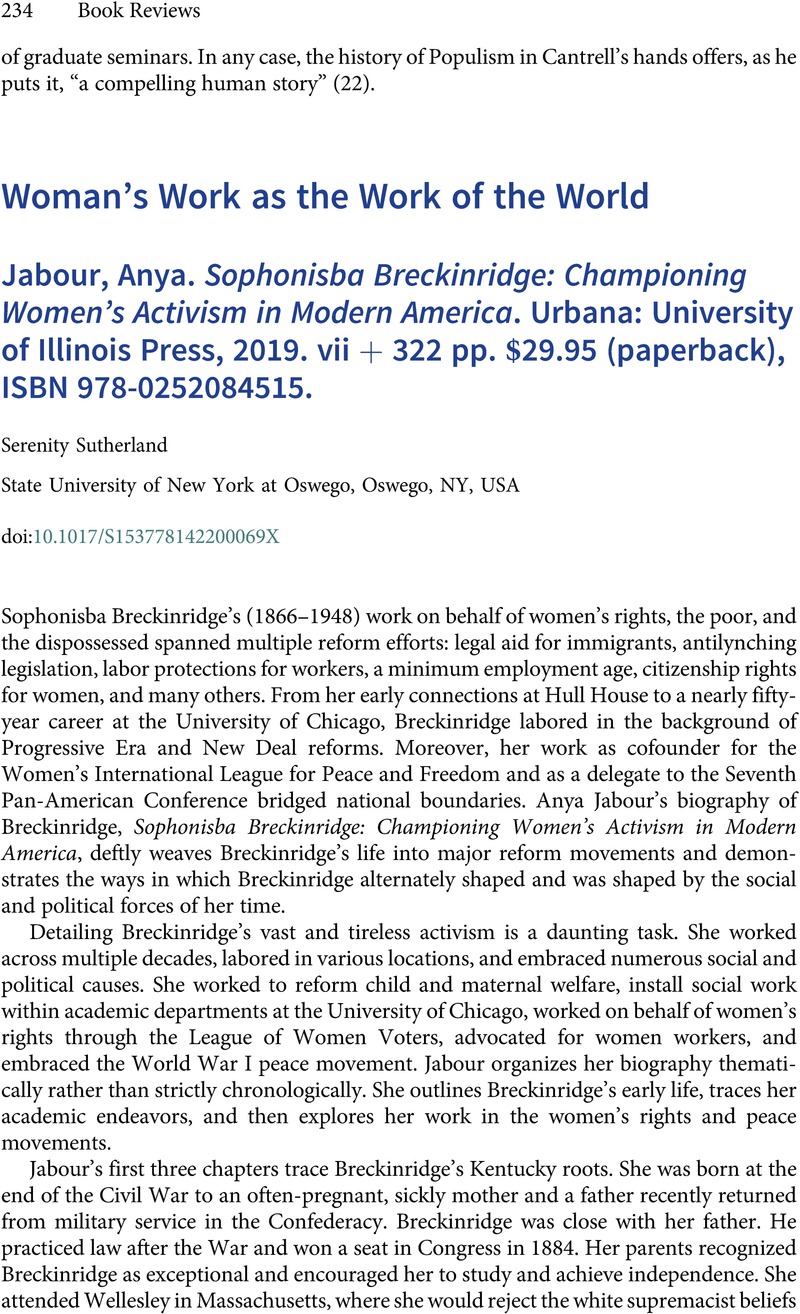No CrossRef data available.
Article contents
Woman’s Work as the Work of the World - Anya Jabour. Sophonisba Breckinridge: Championing Women’s Activism in Modern America. Urbana: University of Illinois Press, 2019. vii + 322 pp. $29.95 (paperback), ISBN 978-0252084515.
Review products
Anya Jabour. Sophonisba Breckinridge: Championing Women’s Activism in Modern America. Urbana: University of Illinois Press, 2019. vii + 322 pp. $29.95 (paperback), ISBN 978-0252084515.
Published online by Cambridge University Press: 22 May 2023
Abstract
An abstract is not available for this content so a preview has been provided. Please use the Get access link above for information on how to access this content.

- Type
- Book Reviews
- Information
- The Journal of the Gilded Age and Progressive Era , Volume 22 , Issue 2 , April 2023 , pp. 234 - 236
- Copyright
- © The Author(s), 2023. Published by Cambridge University Press on behalf of the Society for Historians of the Gilded Age and Progressive Era (SHGAPE)


